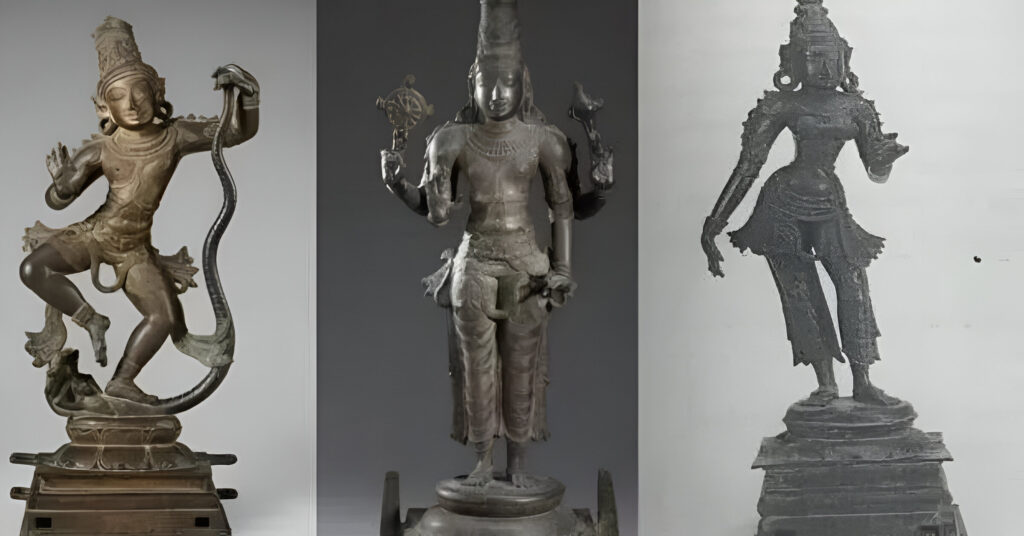
The word “ancient artz,” which refers to the creative creations of prehistoric societies, has had a significant influence on human history and culture. These ancient pieces of art reflect the ideals, worldviews, and social mores of the communities in which they were produced, making them far more than just historical artefacts. Every artefact, from the enormous Egyptian pyramids to the elaborate pottery of Mesopotamia, narrates a tale of human ingenuity and inventiveness.
Through ancient artwork, we can see into the brains of our predecessors and learn about their religious beliefs, social hierarchy, and interaction with the natural world. We are able to follow the development of human intellect, culture, and aesthetics via these timeless masterpieces, all of which have an ongoing impact on contemporary modern art and design.
The Origins of Ancient Artz
Ancient art can be traced back to the earliest human communities, when art became an essential means of expression and communication. Some of the oldest known examples of human art are cave paintings, which date back to about 17,000 years ago. Examples of these paintings may be found in the French caves of Lascaux. These pictures, which frequently featured animals, hunting scenes, and symbolic figures, were used for religious ceremonies and storytelling in addition to being just decorative. Early people used art as a means of recording daily life, establishing spiritual connections, and transferring significant cultural traditions from one generation to the next.
Artistic endeavours evolved alongside societies as they became more sophisticated and evolved. Ancient civilisations, for example
The Role of Religion
Ancient artz was greatly influenced by religion, which was a central factor. Art served as a sacred medium for many ancient civilisations, depicting religious ceremonies, paying homage to gods and goddesses, and conveying abstract spiritual ideas. Ancient Egypt, Mesopotamia, Greece, and the Indus Valley were among the societies where art was closely associated with religious practices and beliefs. The magnificence of religious art, whether it took the shape of colossal statues, finely carved artwork, or imposing structures, was frequently meant to evoke awe and veneration for both the divine and the earthly rulers who were considered to be the go-betweens between the gods and humanity.
For example, there was a particularly close relationship between art and religion in ancient Egypt. The pyramids are arguably the most recognisable image of ancient
Materials and Techniques
Ancient artz were created using a wide range of materials and techniques, reflecting the diversity of the civilisations who produced them. Every civilisation had a favoured media, which were frequently shaped by the local natural resources. For example, stone was preferred by the ancient Egyptians for their sculptures and buildings, especially sandstone and limestone, which were widely available along the Nile River. Many of their monuments, including the Great Sphinx and the pyramids, were able to survive for millennia because of the resilience of these materials. Massive, imposing statues of gods, pharaohs, and other significant characters were frequently carved out of stone, signifying their enduring might.
On the other hand, because they had less access to stone, the ancient Mesopotamians created a great deal of art using clay. Clay was utilised to create ceramics, tablets,
Art as a Cultural Identity
The development and maintenance of ancient civilisations’ cultural identities depended heavily on art. It served as a vehicle for social and political messages in addition to reflecting the norms, values, and customs of a community. For instance, in ancient Egypt, art served to uphold the pharaoh’s divine authority since he was regarded as both a ruler and a god. The pharaoh was portrayed in idealised forms in statues, paintings, and other artwork, frequently posing with gods or carrying out holy rites, underscoring his position as a heavenly ruler.
In a similar vein, the idea of civic pride and collective identity was closely associated with art in ancient Greece. Public sculptures, like those in the Parthenon, honoured the power, knowledge,
The Lasting Influence of Ancient Artz
One cannot emphasise how much old art has influenced modern culture. Ancient civilisations’ creative styles, methods, and subjects are still present in modern art and design. The classical style of ancient Greece is arguably the most notable example of this influence, having had a major impact on Western art for centuries. During the Renaissance, classical art’s defining principles of symmetry, proportion, and naturalism were revived by painters like Michelangelo and Leonardo da Vinci by drawing inspiration from the artwork of ancient Greece and Rome. This renaissance had a profound effect on European art and architecture, and evidence of its influence can still be seen in contemporary sculpture and government structures.
Conclusion
“Ancient artz” is a tribute to the inventiveness, spirituality, and inventiveness of prehistoric human societies. These artistic manifestations, deeply ingrained in social, religious, and cultural contexts, have irrevocably changed the planet. Ancient art has inspired and influenced painters, designers, and architects down to the sophisticated forms of classical Greek art and the opulent temples and statues of ancient Egypt. Ancient artz enables us to appreciate the rich cultural legacy that has created our modern world and to establish a connection with the past via its ageless beauty and profound symbolism.
FAQs
What is ancient artz?
It refers to the artistic expressions of early civilizations, encompassing a wide range of mediums such as paintings, sculptures, pottery, and architecture. These works often reflect the cultural, religious, and social contexts of the time in which they were created.
How did religion influence ancient artz?
Religion played a central role in it, with many civilizations using art to honor their gods, depict mythological scenes, and communicate spiritual concepts. Art served as a way to reinforce religious beliefs and convey the divine power of rulers, who were often seen as intermediaries between the gods and the people.
What materials were used in ancient artz?
Ancient artists used a variety of materials depending on the resources available to them. Stone, clay, and marble were commonly used, with each material chosen for its durability, aesthetic qualities, and ability to convey the intended message. For example, ancient Egyptians favored stone for their monumental structures, while Mesopotamians used clay for their pottery and tablets.
How did ancient artz shape cultural identity?
Art was a crucial tool for shaping and reinforcing cultural identity in ancient civilizations. It conveyed important cultural values, celebrated religious and political achievements, and served as a form of communication between the ruling class and the people. In many cases, art was used to assert the power and authority of rulers, as well as to celebrate the accomplishments of the civilization as a whole.
What is the lasting impact of ancient artz on modern culture?
It continues to have a significant influence on modern culture, particularly through the classical styles of ancient Greece and Rome. These styles have shaped Western art and architecture for centuries, and their influence can still be seen in contemporary design, fashion, and popular culture.
